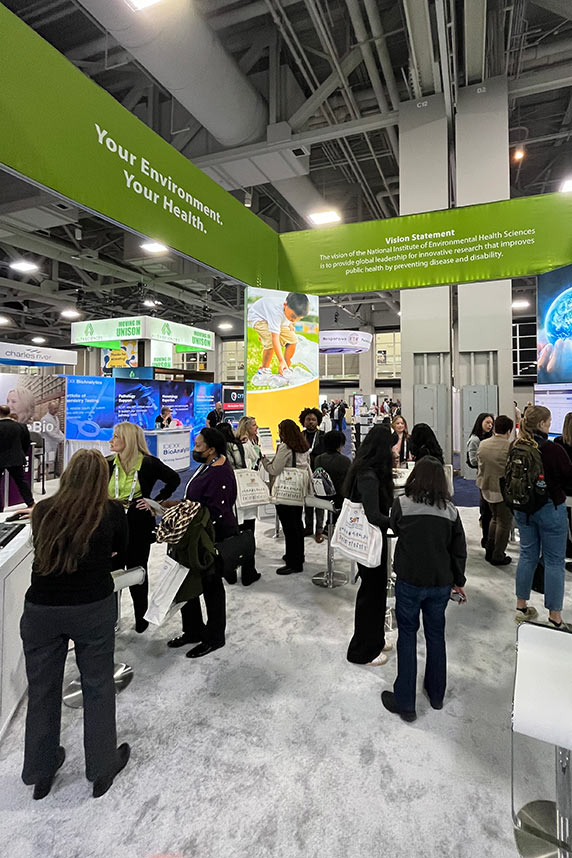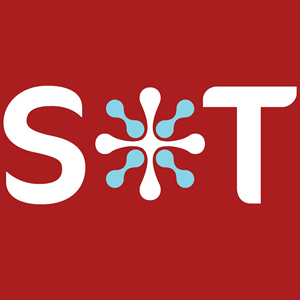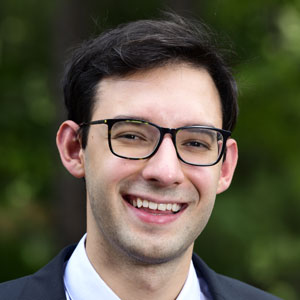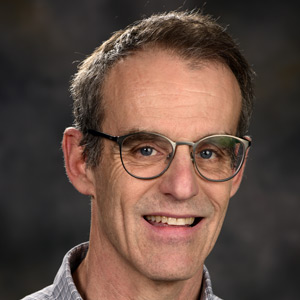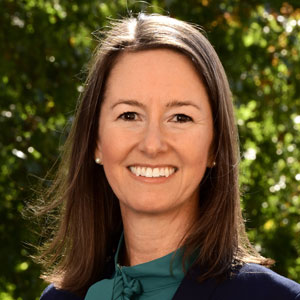At the 63rd annual meeting of the Society of Toxicology (SOT) held March 10-14 in Salt Lake City, Utah, NIEHS scientists and staff presented cutting-edge research on artificial intelligence (AI), neurotoxicity testing, harmful algal blooms, and climate change’s influence on air quality, among many other topics. More than 5,000 toxicologists and professionals from the U.S. and around the world attended the conference, and work by institute scientists and grant recipients was well represented in lectures, poster presentations, and roundtable discussions.
“This year’s meeting was a resounding success, and it provided a great platform for the presentation of groundbreaking research and new advancements in toxicology, particularly highlighting the significant contributions from NIEHS scientists and grantees,” said Dori Germolec, Ph.D., 2023-2024 SOT President and longtime institute scientist. “The conference fostered productive scientific exchange but also spotlighted the innovative work being done at NIEHS, reinforcing our position at the forefront of toxicology and the environmental health sciences more broadly. I am proud of the community we've built at SOT, which will continue to push the boundaries of toxicological science and to advance public health in the years ahead.”

Taking home top prizes
Of 12 major SOT Awards conferred at this year’s conference, seven were presented to NIEHS scientists and grant recipients.
- Achievement Award — Phoebe Stapleton, Ph.D., grantee from Rutgers University. “For development of innovative and technically challenging research methodologies focused on the effects of environmental exposures to nanomaterials on uterine and placental microvascular functioning.”
- Arnold J. Lehman Award — Scott Auerbach, Ph.D., NIEHS molecular toxicologist. “For exemplifying the team science approach in generating genomics-based data that help to inform risk assessment and regulatory decisions that impact public health.”
- Education Award — Ilona Jaspers, Ph.D., grantee from the University of North Carolina at Chapel Hill. “For progressive vision and exceptional leadership in the education and development of the next generation of toxicologists.”
- Leading Edge in Basic Science Award — Donna Zhang, Ph.D., grantee from the Herbert Wertheim UF Scripps Institute for Biomedical Innovation and Technology. “For substantial contributions to NRF2 biology and the understanding of molecular mechanisms by which the environmental contaminant arsenic promotes diseases.”
- Merit Award — David Eaton, Ph.D., former grantee, member of the institute’s advisory council, and chair of the National Toxicology Program (NTP) Board of Scientific Counselors. “For a career dedicated to the advancement of the science of toxicology and SOT.”
- Public Communications Award — Barbara Kaplan, Ph.D., grantee from Mississippi State University. “For prodigious contributions to the public’s knowledge of toxicology and broad efforts to help train and educate individuals in communication skills that are valuable in translating their research to other scientists and the general public.”
- Undergraduate Educator Award — Hollie Swanson, Ph.D., grantee from the University of Kentucky. “For significant contributions to the introduction and instruction of toxicological topics to undergraduate students.”
“The achievements of NIEHS scientists and grantees at this year's SOT meeting underscore the critical role that innovative research, dedicated mentorship, and effective educational outreach play in advancing toxicology and the environmental health sciences,” said Rick Woychik, Ph.D., director of NIEHS and NTP. “It’s truly inspiring to see these individuals recognized for their efforts. Their contributions have paved the way for future scientific breakthroughs, and they exemplify the spirit of excellence that defines our community at NIEHS.”
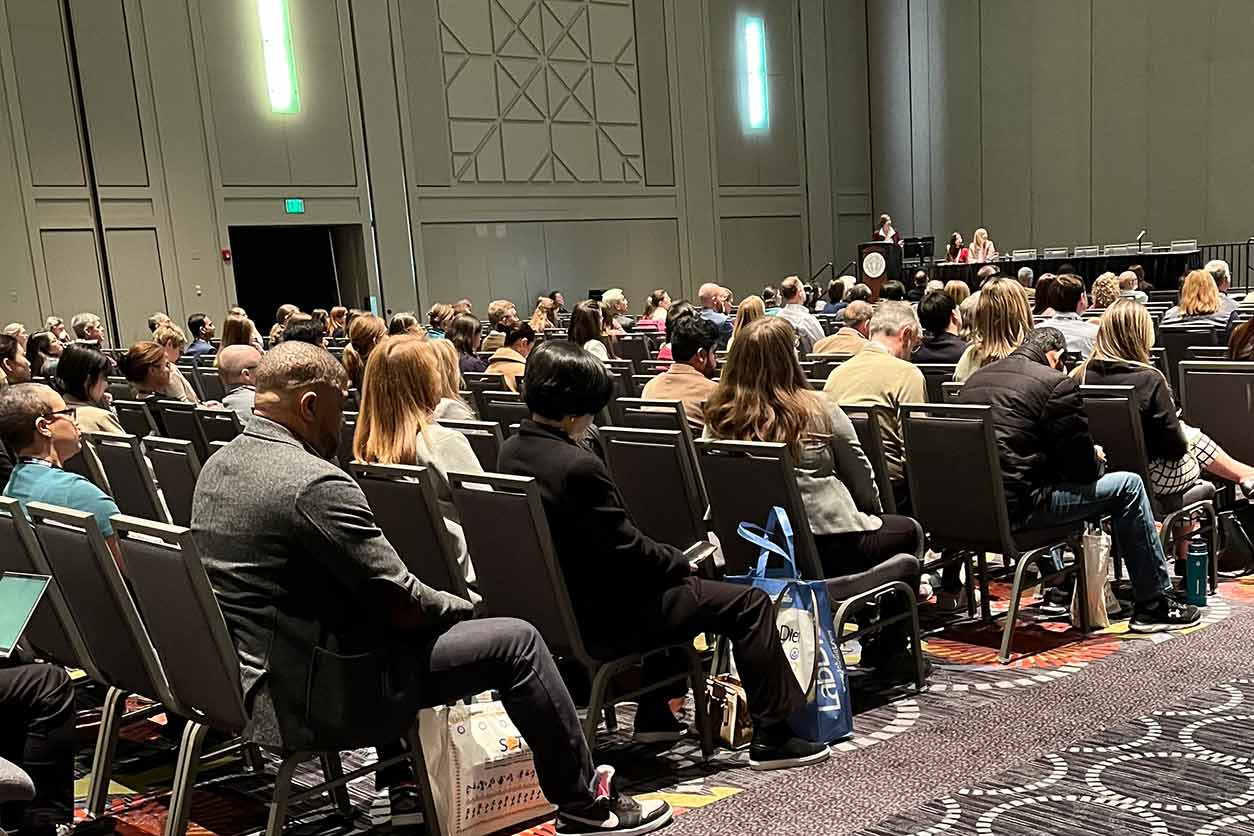
During an event titled “Meet the Director,” Woychik shared research priorities at NIEHS, drawing attention to areas such as exposomics and precision environmental health, as well as the institute’s leadership on the NIH Climate Change and Health Initiative.
He also participated in a session called “The National Toxicology Program: An Interagency Partnership With a Global Reach,” which was moderated by Nigel Walker, Ph.D., who heads the NIEHS Systems Toxicology Branch and helps to provide leadership in support of NTP. Woychik, Walker, Robert Sills, D.V.M., Ph.D., Division of Translational Toxicology (DTT), and a panel of interagency partners — including Annette Guiseppi-Elie, Ph.D., Environmental Protection Agency; Christina Lawson, Ph.D., Centers for Disease Control and Prevention; and Tucker Patterson, Ph.D., U.S. Food and Drug Administration — emphasized the importance of federal coordination in toxicology and fielded questions from attendees.
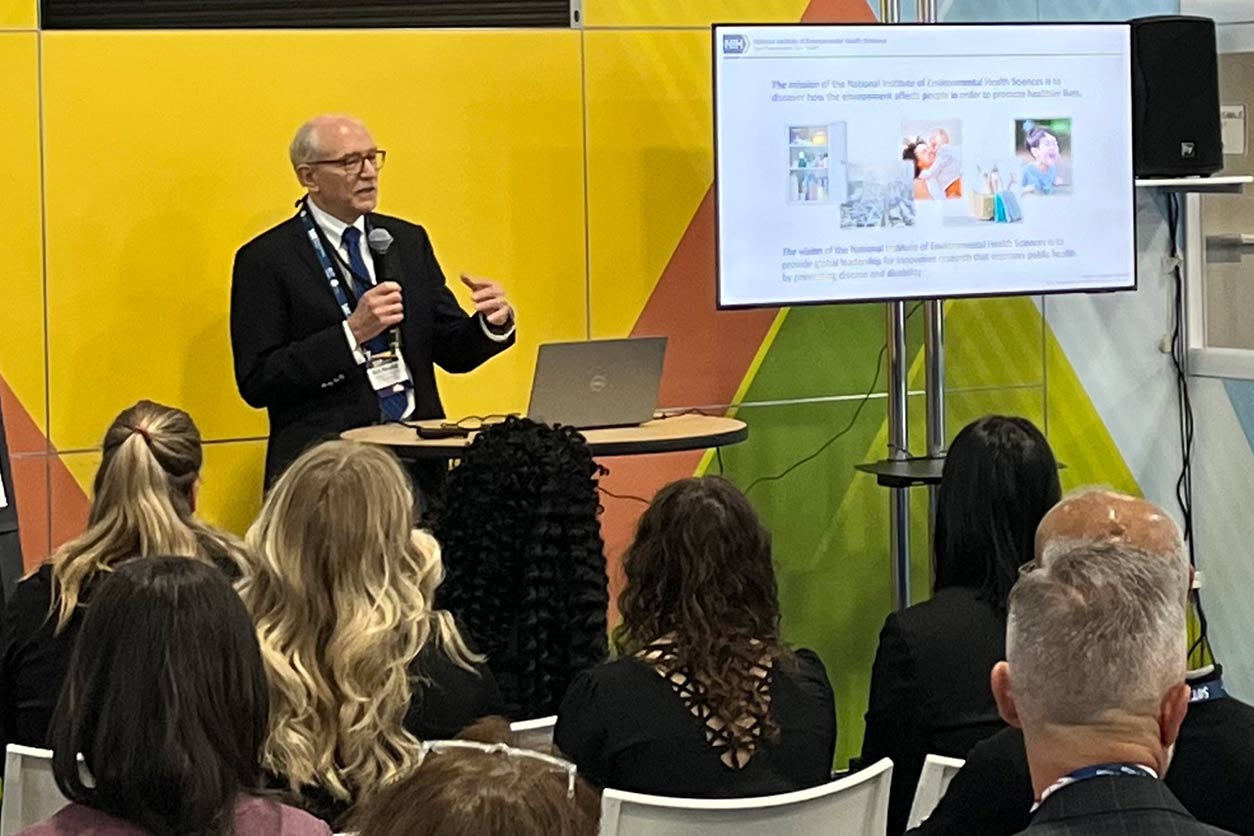
Complementing traditional research models
New approach methodologies (NAMs) garnered significant attention during the conference. Those are tools — such as AI, machine learning, and cell-based models — that promise to complement the use of traditional animal models in toxicological research.
“Building Confidence in New Approach Methodologies to Support Next-Generation Risk Assessment” was presented by Nicole Kleinstreuer, Ph.D., director of the National Toxicology Program Interagency Center for the Evaluation of Alternative Toxicological Methods (NICEATM). She discussed the importance of building scientific trust in the use of NAMs in regulatory decision-making, and how international partnerships are critical.
Kleinstreuer also highlighted a new report — “Validation, Qualification, and Regulatory Acceptance of New Approach Methodologies” — by the Interagency Coordinating Committee on the Validation of Alternative Methods (ICCVAM), which NICEATM supports.
“The ICCVAM report is an excellent resource for anyone looking to advance the use of NAMs in toxicological research,” she noted. “It offers a blueprint for developing, validating, and integrating NAMs into regulatory processes, ensuring that these innovative methods can confidently be applied to protect human health. My colleagues are excited about the evolution of NAMs and look forward to enhancing scientific collaboration in this area moving forward.”
Harmful algal blooms

A symposium on harmful algal blooms was chaired by Anika Dzierlenga, Ph.D., scientific program director in the NIEHS Genes, Environment, and Health Branch, and co-chaired by Rachel Frawley, health scientist in the NIEHS Systems Toxicology Branch and DTT lead on studies of harmful algal blooms, such as microcystin. The session explored how toxins from harmful algal blooms can affect human health and pave the way for disease. Experts from government, academia, and nonprofits discussed their latest findings, and Dzierlenga, who leads the NIEHS–National Science Foundation Oceans and Human Health Program, noted the importance of interdisciplinary research.
“In the face of increasing harmful algal bloom events, our interdisciplinary efforts are more crucial than ever,” said Dzierlenga. “By bridging the gap between biomedical research, toxicology, and oceanographic science, we aim not only to understand the profound impacts of these toxins on human health but also to develop effective strategies for adaptation and mitigation. Through the Oceans and Human Health Program, we're making significant strides in characterizing these toxins and their effects, improving public health responses, and fostering resilient communities against the backdrop of climate change.”
Mixtures research, air pollution, and more
“Making Sense of Chaos: Recent Advances in Complex Mixtures Research and Regulation” was the title of a symposium chaired by Cynthia Rider, Ph.D., a toxicologist at NIEHS. Rider is 2023-2024 SOT Vice President-Elect, and she will now serve as the society’s Vice President for the next year. The session was co-chaired by institute grantee Julia Rager, Ph.D., from the University of North Carolina at Chapel Hill.
“This session focused on the challenge of assessing health risks from complex mixtures, like dietary supplements or pollution from wildfires, which are hard to evaluate because they contain varied and sometimes unknown agents,” said Rider. “Traditional methods usually test one chemical at a time, but these mixtures require different approaches. Speakers discussed case studies and new research methods — including NAMs — that will help the research community better understand these mixtures and their potential health risks.”

Below is a sampling of other conference symposia and presentations.
- “Revolutionizing Detection and Prevention of Neurotoxic Effects: Harnessing the Power of In Vitro and In Silico Approaches for Safer Drug Development and Environmental Monitoring” — Symposium chaired by Helena Hogberg-Durdock, Ph.D., staff scientist in NICEATM.
- “Defining Susceptibility to Ozone: A Window into Exposure Effects in a Changing Climate” — Symposium chaired by NIEHS grantee Alessandro Venosa, Ph.D., from the University of Utah, and co-chaired by Sri Nadadur, Ph.D., head of the NIEHS Exposure, Response, and Technology Branch.
- Predicting Human Liver Injury and Botanical Drug Interactions with 3D Liver Microtissues and High-Throughput Transcriptomics” — Presentation by Stephen Ferguson, Ph.D., NIEHS scientist.
- "The State of the Science Linking Environmental Chemicals to Age-Related Neurocognitive Disease” — Symposium chaired by Danielle Carlin, Ph.D., NIEHS health scientist administrator, and co-chaired by grantee Pamela Lein, Ph.D., from the University of California, Davis.
- “Multi-omics Approaches to Unravel PFAS-mediated Metabolic Dysfunction” — symposium co-chaired by Carlin and Rebecca McCullough, Ph.D., University of Colorado Anschutz Medical Campus.
- “How Did We Get Here? The Environmental Health Language Collaborative’s First Three Years” — Presentation by Andy Rooney, Ph.D., acting chief of the NIEHS Integrative Health Assessments Branch.
- “Next-Generation Sequencing Approaches for Early Identification of Cancer Hazards Using Experimental Models” — Presentation by Arun Pandiri, Ph.D., head of the NIEHS Molecular Pathology Group.
- “Error-Corrected Next Generation Sequencing Strategies for Direct Assessment of Mutagenesis and Early Identification of Cancer Risk” — Innovations in Applied Toxicology symposium co-chaired by Stephanie Smith-Roe, Ph.D., genetic toxicologist in DTT, with presentation by Pandiri.
“Our session underscored the intricate connections between climate change, air quality, and public health, highlighting how shifts in our climate system and emissions from various sources contribute to a range of health issues,” noted Nadadur. “The transition to cleaner energy sources, like electric vehicles, and changes in agricultural practices are steps toward mitigating these impacts, but they also bring new challenges in maintaining air quality. We seek to better understand these complex relationships and to devise strategies that promote health equity, ensuring that responses to climate change and pollution help all communities.”
Funding advice, exhibit booth
Throughout the SOT meeting, the following NIEHS program officers shared insights on the grant funding process with attendees: Michelle Campbell, Danielle Carlin, Ph.D., Chris Duncan, Ph.D., Anika Dzierlenga, Ph.D., Amanda Garton, Astrid Haugen, Jonathan Hollander, Ph.D., Michael Humble, Ph.D., Lingamanaidu (Ravi) Ravichandran, Ph.D., Thaddeus Schug, Ph.D., Carol Shreffler, Ph.D., and Frederick Tyson, Ph.D. Varsha Shukla, Ph.D., NIEHS scientific review officer, presented an overview of the NIH grant application and review process.
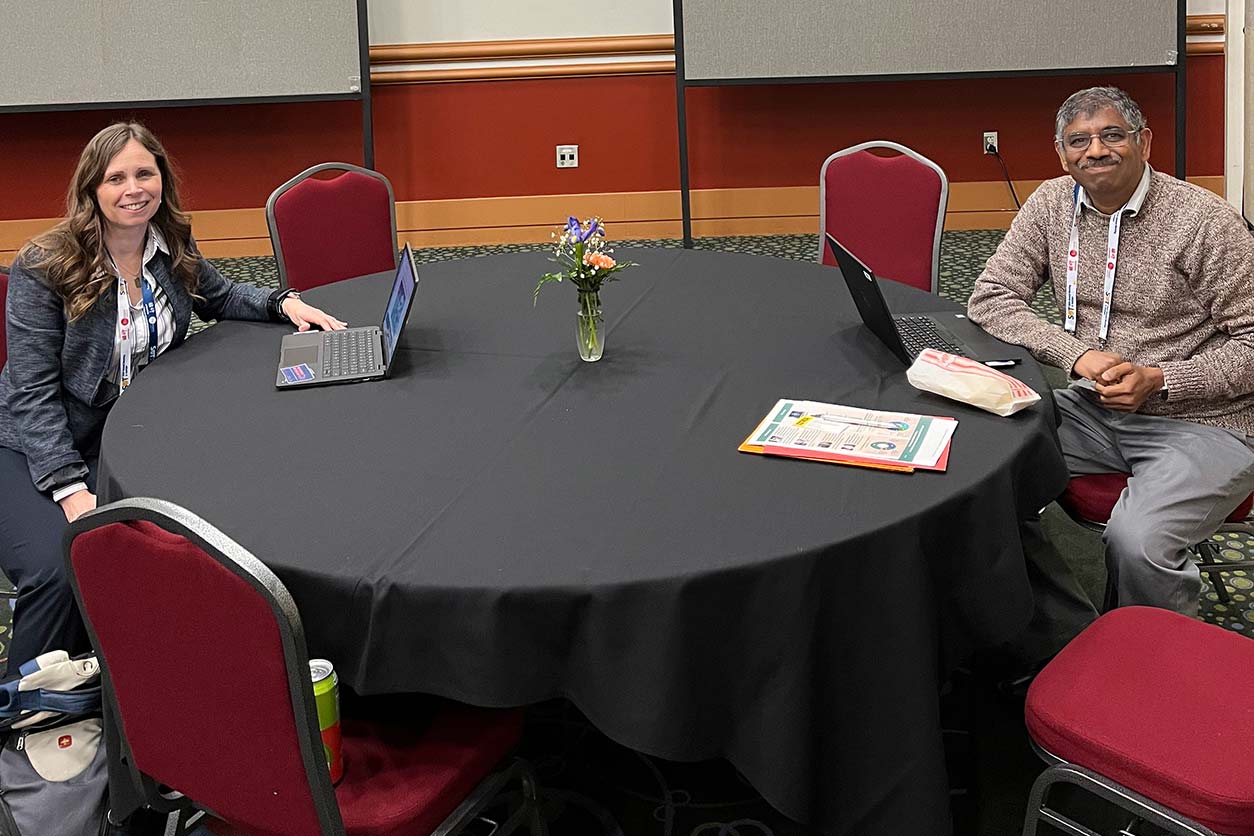
Also at the conference were representatives from the NIEHS Office of Communications, who set up and managed the institute’s exhibit booth, answered attendees’ questions, and shared information about NIEHS research and programs. At the booth, NIEHS hosted demonstrations of the Integrated Chemical Environment (ICE), the Developmental NeuroToxicity Data Integration and Visualization Enabling Resource (DNT DIVER), and the Systematic Evaluation of the Application of Zebrafish in Toxicology (SEAZIT).
The 2025 meeting of the Society of Toxicology will take place March 16-20 in Orlando, Florida.
(Jesse Saffron, J.D., is Deputy Director of the NIEHS Office of Communications and Public Liaison.)





